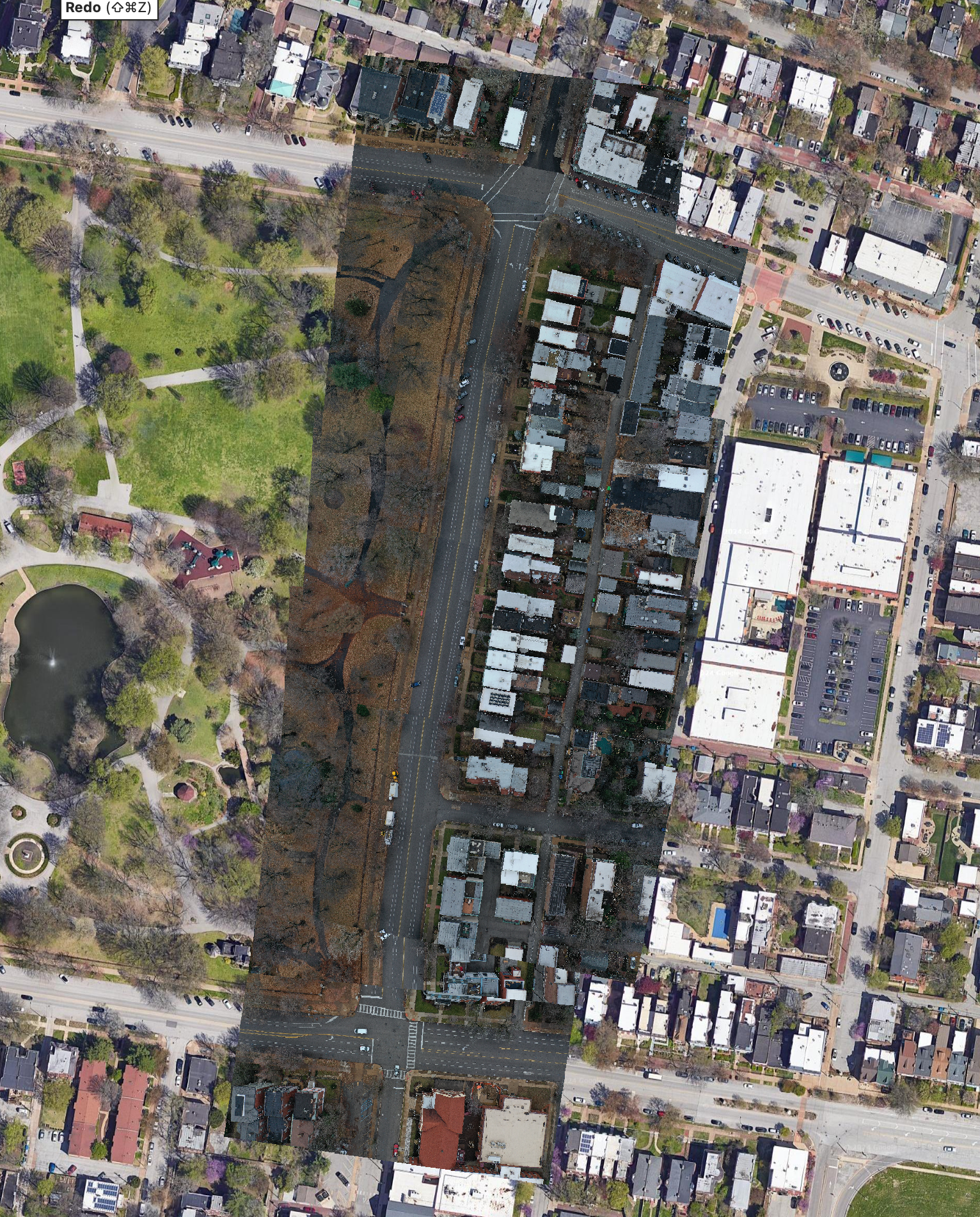Author: Dean Hand
Date Created: 09/07/2019
Name: Drone_Footprints.py
The purpose of this application is to accurately calculate the geographic footprints of individual drone images. Initially, it extracts specific metadata from the drone image files to determine each image's Field of View (FOV). Following this, the application performs a series of calculations to establish the geospatial reference of each image. Subsequently, it adjusts the image to align accurately with the Earth's surface within that FOV, ensuring precise geolocation without the need for stitching images together. This results in a remarkably efficient process. The final output includes a geo-rectified GeoTiff image file, accompanied by a GeoJSON file detailing:
- The Drone's Flight Path (as a LineString),
- The Drone's Location at the moment the photo was taken (as a Point),
- The Footprints of Individual Images (as Polygons).
- Ready-made gdal version 3.8.3 or later. On Ubuntu, you can install as follows:
sudo add-apt-repository ppa:ubuntugis/ubuntugis-unstable
sudo apt-get update
sudo apt-get install libgdal-dev
Installation via pip
First, you probably want to install into a virtual environment or similar, for example:
python3.10 -m venv env # Install with compatible maximum version of Python (Requires-Python >=3.7,<3.11)
source env/bin/activate
The we install using the requirements list as follows:
pip install -r requirements.txt
Python 3.6 and above
-i - The Default root folder for the mission you wish to process. Required
-o - The output directory for the GeoJSON file and GeoTiffs. Required
-w - Sensor Width (default is 13.2) Not Required (Check your Drones Specs for information)
-d - Sensor Height (default is 8.8) Not Required (Check your Drones Specs for information)
-e - Desired EPSG for output GeoTiffs (default is 4326) Not Required
From the src directory, run the following commands:
python Drone_Footprints.py -i '/Path/To/Dataset1/images' -o '/Path/To/Dataset1/output
python Drone_Footprints.py -i "/Path/To/Dataset2/images" -o "/Path/To/Dataset2/output" -w 6.16 -d 4.62
python Drone_Footprints.py -i "/Path/To/Dataset3/images" -o "/Path/To/Dataset3/output" -e 3857
- IMU calibration - Do this once a month
- Prior to each mission:
- Calibration the drone's gimbal
- Calibration the drone's compass
- Restart the drone
- Shooting angle - for best results, select
Parallel to Main Path - Gimbal Pitch Angle - for best results, capture at NADIR (aka -90° aka straight down)
- Wind - Plays havoc on your drone's telemetry, so plan your missions accordingly
It is highly recommended that you sort the images you want processed into corresponding datasets
- Separate Images by flight mission
- Create a mission folder for each flight mission
- Create an image folder within the mission folder
├── /Path/to/mission_folder
│ ├── images
It is a good practice to set your output folder -o location within your flight mission folder as shown in
Example Commands, but it is not required.
├── /Path/to/output_folder
│ ├── geotiffs
│ │ ├── image1.tif
│ │ ├── image1.tif
│ ├── geojsons
│ │ ├── M_2024-02-06_11-16.json
Geojson name is constructed using the date/time of processing like so:
M= mission2024-02-06= year, month, day11-16= hour, minute
There still remains many empty cells in drone_sensors.csv, but will update it as that information becomes available.
Tested and works with:
- Phantom 4 Series
- Mavic 2 Series
- EVO II
- Not currently working with older drones (i.e. Phantom 3 Series). The differences in how telemetry is processed and translated into metadata is.... troublesome.
- This accuracy of this process is highly dependent on the accuracy of the drone's telemetry. Like all compasses, the drone's compass is highly susceptible to electromagnetic interference. Therefore, Datasets collected in areas of high magnetic interference (i.e. power lines, large metal structures, etc) will have a higher margin of error.



